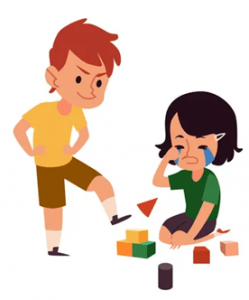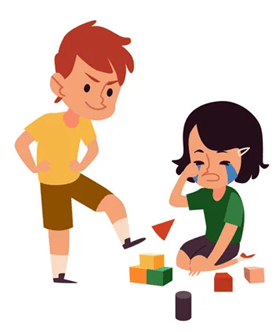Student Contributor: Kellan
 The 3 A’s of Restitution is a three part process to making amends after exhibiting anti-social behavior. This tool guides students through taking responsibility for their actions and then correcting them.
The 3 A’s of Restitution is a three part process to making amends after exhibiting anti-social behavior. This tool guides students through taking responsibility for their actions and then correcting them.
The 3 A’s stand for acknowledge, apologize, and act. When anti-social behavior has occurred and has affected something or someone else, there is a need for restitution. This is vital to the relationships within the classroom. The student first must acknowledge that they exhibited anti-social behavior and accept responsibility for their actions. The next step is to apologize to those who were affected. Lastly, the student must act on that apology. For example, let’s say James knocks over Julie’s block tower and Julie begins to cry. To make amends, James needs to first acknowledge that what he did was anti-social, and accept responsibility for upsetting Julie. He must then genuinely apologize to Julie. Lastly, he must act on that apology. This could be done by helping her rebuild the tower, and leaving other classmate’s creations alone in the future. This tool should not be applied to every single behavior that is being corrected, but rather when the behavior has negatively affected someone or something. These steps should be explicitly taught, and the acronym could be displayed as a poster in the room for students to refer to.
 I placed this tool in the corrective phase. The need for restitution lies in the corrective phase, and this tool is used for after anti-social behavior has occurred. In the preventative phase, these steps must be taught and explained. Students should discuss and review what restitution is, why it is important, and when it is needed.
I placed this tool in the corrective phase. The need for restitution lies in the corrective phase, and this tool is used for after anti-social behavior has occurred. In the preventative phase, these steps must be taught and explained. Students should discuss and review what restitution is, why it is important, and when it is needed.
The 3 A's are a tool for students to use and apply themselves. The teacher might also refer students to the three steps when they are having trouble making amends (not sure what to do/ say, not wanting to take responsibility, emotions running high). I would place this tool primarily in the Student Directed Theory because it relies on them making amends – it cannot be done for them. However, it may take some teacher direction to get the students started in this process, which pulls the tool towards the middle (collaborative) part of the continuum. In a fully student-centered classroom, students would decide when these steps were necessary for restitution.
More Information –
Tool Source: I was inspired by reading about restitution in the corrective phase.


